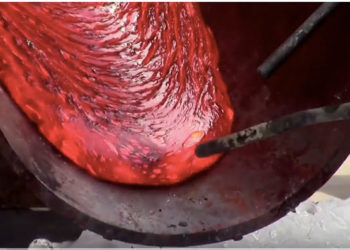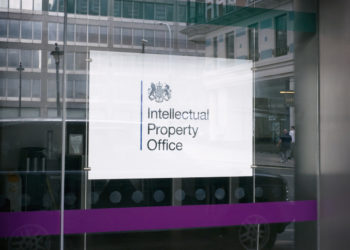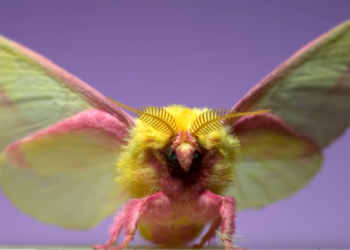Here in the Northeast of the United States, we’ve begun the shift from summer into Autumn. One key indicator of this is the waning availability of stone fruits like peaches and the rise of orchard fruits, particularly apples. Which brings up the linguistic conundrum — why is the “Red Delicious” apple the worst tasting apple on the fruit stand?
The video below, from Atomic Frontier, takes a look at the history of apples, and explains the combination of genetics and business strategies that have shaped our current apple market. The Red Delicious was apparently at one time actually delicious. Over the years, it was bred more and more for appearance and durability in shipping, resulting in the current iteration, which features a thick skin and a mushy interior.
This particular cultivar became the dominant one sold in grocery stores in the US, which is disappointing enough that it led to a team at the University of Minnesota, led by David Bedford, to start generating new cultivars. Their first great success was the Honeycrisp apple, which corrected many of the errors introduced into the Red Delicious line. Unfortunately, once released into the market, the same forces took hold, and there is an increasing variety in what you get if you buy a Honeycrisp apple, as they are now once again being bred for appearance and shelf life over taste.
Dismayed by this, Bedford took a new tact. The group produced a new cultivar, the Sweetango™. As noted by that little symbol, Bedford’s group trademarked the name, and will only allow it to be used for apples that taste like a Sweetango™ is supposed to taste. So if you buy one of these beauties in your local store, you know what you’re getting.
An interesting lesson in agriculture, history, and business strategy, and one showing how intellectual property protections can be a force for good.
Discussion
4 Thoughts on "Autumnal Apples, and How Intellectual Property Rights Make Them Taste Better"
Very neat! We did a podcast episode for our society podcast about apple breeding (how to use both visible, phenotypic traits and genetic traits to shorten breeding time) and one of our guests said Sweetango was her favorite. Guess now I know why!
It should be noted that there are two different kinds of IP involved here: patent and trademark. Honeycrisp was originally under patent, and that protected it, but patents expire and it may be that, rather than some “forces that took hold” that have caused it to morph into something else (although my local growers still offer really great, original-like Honeycrisps). Trademarks never expire, and it seems it took a few decades for UMN to figure that out and start applying trademark in addition to patent. They have apparently gone back and come up with a trademark name for the proper Honeycrisp, HoneyCrunch, but maybe too late for marketing, as that older name is the better known. https://mnhardy.umn.edu/commercial-growers/license/license-apples
The Washington State developers of the newer Cosmic Crisp apple got right on board with trademark. https://cosmiccrisp.com/story/ (although I still prefer my local honeycrisp to the Cosmic Crisp).
Very interesting story. Now I hope Bedford and his team take on the tomato, which has been bred into a beautiful-looking but tasteless orb.
+1000 to that! But somehow I don’t think Minnesota is going to be as interested in tomatoes as apples. Maybe need to interest one of the California universities to do that: https://www.statista.com/statistics/193242/top-10-fresh-market-tomato-producing-states-in-the-us/



